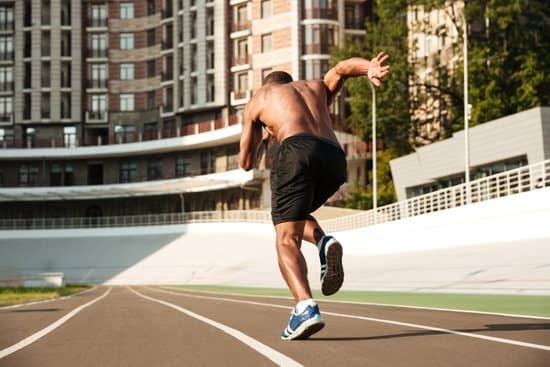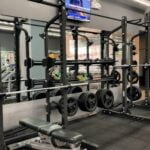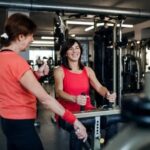Middle schoolers today are facing an increasing sedentary lifestyle, spending countless hours on screens and sitting for long periods of time. This alarming trend is contributing to a range of health issues among this age group. That’s why it’s crucial to introduce fitness exercises into their lives. Physical fitness not only improves their overall well-being but also enhances academic success.
Regular exercise for middle schoolers comes with a multitude of benefits. Firstly, it improves their physical health by boosting cardiovascular fitness, muscle strength, and flexibility. These improvements lay the foundation for a healthy body and reduce the risk of future health problems. Furthermore, regular physical activity has been shown to have significant mental health benefits such as reducing stress, anxiety, and depression while enhancing mood and self-esteem.
In addition to these physical and mental advantages, regular exercise has shown to benefit middle schoolers academically as well. Engaging in fitness exercises has been linked to enhanced concentration, memory, and cognitive function. By incorporating exercise into their routine, middle schoolers can improve both their physical abilities and their intellectual performance.
Benefits of Regular Exercise for Middle Schoolers
Regular exercise offers numerous benefits for middle schoolers, both physically and mentally. Engaging in physical activity not only improves their overall health but also enhances their academic performance and emotional well-being.
One of the primary advantages of regular exercise for middle schoolers is improved physical health. Through activities that boost cardiovascular fitness, muscle strength, and flexibility, they can develop a strong and healthy body.
According to the Centers for Disease Control and Prevention (CDC), children and adolescents aged 6 to 17 should engage in at least 60 minutes of moderate-to-vigorous physical activity daily. Meeting this guideline can reduce the risk of developing chronic conditions such as obesity, heart disease, and type 2 diabetes later in life.
In addition to physical health benefits, regular exercise has a positive impact on mental well-being. Middle schoolers often face stressors related to academics, social relationships, and puberty. Exercise provides them with an outlet to release stress, reduce anxiety and depression symptoms, enhance mood, and improve self-esteem. It can also contribute to better sleep quality, which is crucial for their overall mental functioning.
These benefits of regular exercise extend beyond the physical and mental domains into academic performance. Engaging in physical activity has been shown to enhance concentration, memory retention, cognitive function, and executive functioning skills among middle schoolers. A study published in the journal Pediatrics found that higher levels of aerobic fitness were associated with improved mathematics and reading scores in children aged 9-11 years.
Overall, promoting regular exercise among middle schoolers helps optimize their development during this crucial period of growth. By incorporating various types of physical activity into their routines – including team sports like soccer or basketball, individual activities like running or swimming, dance workouts like Zumba or hip-hop – educators, parents, and caregivers can support these young individuals in achieving holistic well-being.
| Benefits | Middle Schoolers |
|---|---|
| Improved physical health | Boosting cardiovascular fitness, muscle strength, and flexibility |
| Mental health benefits | Reducing stress, anxiety, and depression; enhancing mood and self-esteem |
| Academic advantages | Enhancing concentration, memory, and cognitive function |
Tailoring Fitness Exercises to Middle Schoolers’ Developmental Stage
Middle schoolers are at a unique stage of development both physically and cognitively. It is important to tailor fitness exercises to their specific developmental needs in order to promote safety and avoid injuries. Middle schoolers experience significant physical growth during this stage, with many going through puberty and experiencing changes in body composition. At the same time, they continue to develop cognitive abilities such as decision-making skills and motor control.
One key consideration when designing fitness exercises for middle schoolers is choosing age-appropriate activities. This ensures that the exercises are suitable for their current level of physical development and reduce the risk of injuries. It is important to select exercises that match their current skill level, strength, and coordination. For example, incorporating bodyweight movements like push-ups or jumping jacks can be effective for building endurance and strength without placing excessive strain on joints.
In addition to selecting appropriate exercises, it is equally important to provide proper guidance and supervision to ensure safety during workouts. Middle schoolers may still be developing proper form and technique for certain movements, so having trained instructors or coaches present can help correct any mistakes and prevent potential injuries. Whether it’s participating in organized sports programs or exercise classes specifically designed for middle schoolers, having knowledgeable supervision can provide them with the support they need.
To summarize, when tailoring fitness exercises for middle schoolers, it is essential to consider their unique developmental stage. This includes understanding their physical growth and coordinating age-appropriate activities to promote safety and prevent injuries. By providing appropriate exercises and guidance from trained professionals, middle schoolers can safely engage in physical activity while reaping the numerous benefits that regular exercise provides in terms of physical health, mental well-being, academic performance, and overall development.
Fun and Engaging Fitness Exercises for Middle Schoolers
Physical activity is essential for the overall well-being of middle schoolers. It not only helps promote good health but also has numerous benefits for their mental and academic development. Engaging in fun fitness exercises can make exercise enjoyable and help middle schoolers develop a positive attitude towards physical activity.
Team sports are a great way for middle schoolers to engage in physical activity while also enjoying the social aspect of being part of a team. Sports like soccer, basketball, and volleyball offer various benefits such as improving cardiovascular fitness, developing coordination and teamwork skills, and enhancing overall body strength. These sports provide an opportunity for middle schoolers to learn and develop important life skills like leadership, resilience, and sportsmanship.
Individual activities such as running, swimming, and cycling can also be enjoyable for middle schoolers. Running not only improves cardiovascular fitness but also helps boost endurance. Swimming offers a low-impact workout that engages multiple muscle groups while being gentle on the joints. Cycling is another excellent aerobic exercise that promotes cardiovascular health while exploring outdoor environments.
In addition to team sports and individual activities, dance and aerobic workouts are popular among middle schoolers. Zumba classes or hip-hop routines can be engaging ways to improve coordination, rhythm, flexibility, and balance. These dance-based workouts not only offer physical benefits but also provide an avenue for self-expression and creativity.
| Fitness Exercise | Benefits |
|---|---|
| Team Sports (Soccer, basketball, volleyball) | -Improves cardiovascular fitness
|
| Individual Activities (Running, swimming, cycling) | -Improves endurance and cardiovascular fitness
|
| Dance and Aerobic Workouts (Zumba, hip-hop) | -Improves coordination, rhythm, flexibility, and balance
|
By offering a variety of enjoyable fitness exercises, middle schoolers can find activities that they truly enjoy and look forward to participating in. It is important to encourage middle schoolers to explore different types of physical activities to discover what suits their interests and strengths best. Creating an environment that promotes fun and engagement can lay the foundation for a lifelong habit of prioritizing fitness.
Strength and Resistance Training for Middle Schoolers
Middle school is a crucial time for physical development, and incorporating strength and resistance training into fitness routines can be highly beneficial. While some may worry about the safety of strength training for this age group, when done correctly and under proper supervision, it can have numerous positive effects on middle schoolers’ overall health and well-being.
This section will provide an overview of safe and effective strength exercises for middle schoolers, emphasizing proper form, technique, and the importance of supervision.
Safe and effective strength training exercises for middle schoolers should focus on using their own body weight or light resistance to promote muscle development without placing excessive stress on growing bones and joints. It is important to note that children’s bodies are still developing during this stage; therefore, heavy weights should be avoided.
Exercises using bodyweight
Bodyweight exercises are an excellent starting point for middle schoolers who are new to strength training. They can easily be performed at home or in a gym setting without the need for any specialized equipment. Some examples of bodyweight exercises suitable for this age group include:
- Push-ups: This exercise strengthens the chest, shoulders, and triceps. It can be modified by performing them against a wall or on an incline surface to make it more manageable.
- Squats: Squats target the muscles of the lower body, including the quadriceps, hamstrings, glutes, and calves. Proper squatting technique should be emphasized to ensure optimal results while preventing injury.
- Plank: Planks are an effective core-strengthening exercise that engage multiple muscle groups simultaneously. Start with short durations (e.g., 10-15 seconds) and gradually increase as strength improves.
Exercises using resistance bands or light dumbbells
Resistance bands or light dumbbells can be incorporated into middle schoolers’ strength training routines to add a progressive challenge. These tools provide resistance without the risk of heavy weights. Some examples of exercises using resistance bands or light dumbbells include:
- Bicep curls: Holding a resistance band or light dumbbells in both hands, slowly curl your arms up towards your shoulders while keeping your elbows stable.
- Tricep extensions: Hold a resistance band or light dumbbell with both hands behind your head, then slowly raise and lower the weight by straightening and bending your elbows.
- Lateral raises: Stand with feet shoulder-width apart, holding a resistance band or light dumbbells in each hand. Raise your arms out to the sides until they are parallel to the floor, then lower back down.
By incorporating safe and age-appropriate strength exercises into their fitness routines, middle schoolers can experience improved muscle strength, bone density, and overall physical fitness. It is important for them to work with qualified instructors who can guide them through proper form and technique to prevent injuries and maximize the benefits of their workouts.
Remember, the focus should be on gradual progression and development rather than heavy lifting. With proper guidance and supervision, middle schoolers can safely embark on their journey towards building a stronger body for a healthier future.
Flexibility and Stretching Exercises for Middle Schoolers
Flexibility exercises are crucial for middle schoolers as they promote muscle balance, improve range of motion, and reduce the risk of injuries. During this stage of development, middle schoolers experience growth spurts and an increase in physical activity. Incorporating flexibility and stretching exercises into their fitness routine will not only help prevent muscle imbalances but also optimize performance in sports and daily activities.
Importance of Flexibility Exercises
Flexibility exercises play a significant role in preventing injuries among middle schoolers. As their bodies grow rapidly, muscles and tendons can tighten, leading to imbalances that may result in strains or sprains during physical activity. Regular stretching routines help maintain proper muscle length and joint mobility, reducing the risk of injury.
In addition to injury prevention, flexibility exercises also enhance overall athletic performance. Optimal flexibility allows middle schoolers to perform movements with greater ease and efficiency. This is particularly beneficial for sports that require a wide range of motion such as basketball, gymnastics, or dance.
Dynamic Stretching Routines
Middle schoolers should engage in dynamic stretching routines before physical activity to warm up the body and prepare the muscles for movement. Dynamic stretches involve moving parts of the body through a full range of motion without holding the stretch. Some examples include leg swings (front-to-back and side-to-side), walking lunges with torso rotation, or arm circles.
It is essential to target major muscle groups during these dynamic stretching routines. For example, hamstring stretches can be done by performing walking toe touches or high knees with a kickback. Incorporating hip openers such as forward leg swings or lateral leg swings can help improve hip mobility.
Yoga and Pilates
Yoga and Pilates are highly effective flexibility-focused workouts for middle schoolers. These practices emphasize both static stretches (holding poses) and dynamic movements that promote balance, stability, and flexibility.
In yoga classes or routines specifically designed for middle schoolers, various poses can help improve flexibility. The downward dog pose stretches the hamstrings, calves, and shoulders, while the warrior series targets hip and lower body flexibility. Additionally, the cobra pose opens up the chest and increases spinal mobility.
In Pilates, exercises such as the swan stretch target the back extensors and promote a healthy spine. Leg circles help improve hip mobility and strengthen the core. Both yoga and Pilates encourage mindfulness and body awareness, which can benefit middle schoolers in their overall well-being.
By incorporating flexibility exercises into their fitness routine, middle schoolers can maintain muscle balance, reduce injury risks, and enhance performance in sports and physical activities. Implementing dynamic stretching routines and exploring practices like yoga or Pilates will support their growth and development while promoting a lifelong commitment to physical fitness.
Importance of Warm-up and Cool-down Exercises
Warm-up and cool-down exercises are essential components of any fitness routine, and they play a crucial role in promoting the overall well-being of middle schoolers. These exercises not only help to prevent injuries but also enhance performance and aid in recovery. It is important for middle schoolers to understand the significance of incorporating warm-up and cool-down exercises into their workout routines.
Before engaging in any physical activity, it is vital for middle schoolers to warm up their bodies. A dynamic warm-up routine helps to prepare the muscles, joints, and cardiovascular system for exercise. This can be done through activities like jogging in place, jumping jacks, or high knees. By increasing blood flow to the muscles and raising body temperature, warm-up exercises loosen muscles and tendons, making them more flexible and less prone to injury during exercise.
On the other hand, cool-down exercises are equally important after a workout session. Cooling down allows the body to gradually return to its resting state and aids in reducing post-workout muscle soreness. Static stretching exercises should be performed during this phase, targeting major muscle groups that were used during the workout. Stretching helps to improve flexibility, reduce muscle tension, and promote relaxation.
By emphasizing the importance of warm-up and cool-down exercises, middle schoolers can significantly decrease their risk of injury while maximizing the benefits of their fitness routines. Whether it’s participating in team sports or engaging in individual activities such as running or swimming, incorporating proper warm-up and cool-down practices will contribute to a safer and more effective workout experience for middle schoolers.
Creating a Balanced Fitness Routine for Middle Schoolers
To ensure a well-rounded approach to fitness for middle schoolers, it is important to create a balanced fitness routine. This means incorporating different types of exercises that target various aspects of physical health and development. Here are some guidelines on how to design an age-appropriate workout schedule for middle schoolers:
- Aerobic Activities: Include aerobic exercises in the routine to improve cardiovascular fitness and endurance. Choose activities such as running, cycling, swimming, or participating in team sports like soccer or basketball. Aim for at least 60 minutes of moderate to vigorous-intensity aerobic activity per day.
- Strength Training: Incorporate strength exercises into the routine to develop muscle strength and bone density. It is important to note that middle schoolers should focus on bodyweight exercises and gradually progress through proper form and technique before introducing resistance training with light dumbbells or resistance bands. Supervision from a qualified adult is essential during strength training sessions.
- Flexibility Exercises: Ensure that the routine includes flexibility exercises to improve joint mobility and prevent injuries. Dynamic stretching routines targeting major muscle groups should be performed before exercise sessions, while static stretching can be done during the cool-down phase.
- Rest Days: Remember to include rest days in the schedule to allow for recovery and prevent burnout or overtraining. Rest days are crucial for muscle repair, growth, and overall physical well-being.
It is important to provide variety and make the routine fun and engaging for middle schoolers. This can be achieved by incorporating different activities and allowing them to choose exercises they enjoy. Mixing up the routine not only keeps boredom at bay but also helps work different muscle groups and prevents overuse injuries.
By creating a balanced fitness routine, middle schoolers can experience the benefits of exercise in a safe and effective manner while laying a foundation for lifelong healthy habits.
Encouraging Healthy Habits Beyond Exercise
In addition to regular exercise, it is essential to encourage middle schoolers to develop healthy habits beyond physical activity. Promoting proper nutrition, hydration, and sleep patterns is crucial for their overall well-being. By emphasizing these habits, we can help middle schoolers establish a strong foundation for a healthy lifestyle.
Proper nutrition plays a vital role in supporting the growth and development of middle schoolers. Encouraging them to consume a balanced diet that includes fruits, vegetables, whole grains, lean proteins, and healthy fats can provide the necessary nutrients for optimal health.
Avoiding excessive consumption of sugary snacks and beverages is also important in preventing weight gain and maintaining energy levels throughout the day. Educating middle schoolers about the benefits of a nutritious diet can empower them to make informed choices and develop positive eating habits.
Hydration is often overlooked but equally essential for middle schoolers’ well-being. Encouraging them to drink an adequate amount of water throughout the day helps regulate body temperature, maintain proper organ function, and prevent dehydration. Providing reusable water bottles or access to water fountains at school can serve as reminders for middle schoolers to stay hydrated.
In addition to nutrition and hydration, prioritizing sufficient sleep is crucial for middle schoolers’ growth and development. Middle schoolers need around 9-11 hours of sleep per night to function optimally. Establishing consistent bedtimes and creating a peaceful sleep environment free from distractions such as electronic devices can aid in achieving quality sleep. Educating middle schoolers about the importance of sleep hygiene and its impact on their overall health can support their well-being.
Beyond physical health, it is important to encourage positive body image, self-care, and healthy lifestyle choices among middle schoolers. Fostering a supportive environment that promotes acceptance of diverse body types and challenging societal beauty standards helps build self-esteem in this critical stage of their lives. Teaching them about self-care practices such as mindfulness, meditation, and journaling can assist in managing stress, improving mental health, and cultivating a positive outlook.
By prioritizing healthy habits beyond exercise, we can empower middle schoolers to take charge of their overall well-being. Providing the necessary tools, information, and support enables them to make informed choices that will contribute to a lifelong commitment to health and wellness. Encouraging middle schoolers to embrace these habits not only benefits them now but also lays the foundation for a healthier future.
Conclusion
In conclusion, prioritizing fitness for middle schoolers is of utmost importance for their overall well-being, academic success, and future health. Regular exercise provides numerous benefits, including improved physical health, enhanced mental well-being, and increased cognitive function.
By tailoring fitness exercises to their developmental stage and incorporating a balanced routine that includes strength training, flexibility exercises, and aerobic activities, middle schoolers can maximize their potential and avoid injuries. It is essential to remember that creating healthy habits goes beyond exercise alone; encouraging proper nutrition, hydration, sleep patterns, positive body image, self-care practices, and healthy lifestyle choices are equally important.
Middle school is a crucial period in a person’s life where lifelong habits are formed. By empowering middle schoolers to prioritize fitness now, they will set themselves up for a healthier future. Beyond the immediate benefits of regular exercise, it instills discipline, resilience, and perseverance – qualities that extend far beyond the gym or sports field.
As middle schoolers embark on this journey towards better health and well-being through fitness exercises, it is important to offer encouragement and support. They should be reminded that they have the power to take charge of their own well-being and make choices that will positively impact their lives.
By fostering a positive mindset around fitness and inspiring them with affirming words such as “you are capable,” “you have the strength,” and “you are in control of your own destiny,” we can help empower middle schoolers on their path to lifelong fitness.
Frequently Asked Questions
What exercise should a 12 year old be doing?
At the age of 12, it is important for children to engage in a variety of exercises that promote their overall physical development. Regular aerobic activities like swimming, cycling, or playing sports such as basketball or soccer can help improve cardiovascular endurance and coordination.
Strength training exercises using bodyweight or light resistance bands can also be introduced under proper supervision to help enhance muscle strength and bone health. Additionally, activities that promote flexibility like yoga or stretching can support joint mobility and posture alignment for 12-year-olds.
What exercise should a 13 year old do?
When a child turns 13, they are typically physically capable of participating in a wider range of exercises. Similar to a 12-year-old, engaging in aerobic activities remains important to build cardiovascular endurance, either through organized sports or individual activities such as running or dancing.
With adequate guidance from a trained professional, more structured strength training exercises involving free weights or gym machines may be incorporated into their routine to further develop muscle strength and promote healthy bone growth. Flexibility exercises should also continue to be emphasized as part of their exercise regimen to maintain optimal mobility.
What are easy exercises for middle schoolers?
Easy exercises for middle schoolers should focus on inclusivity and enjoyment while promoting physical activity. Activities such as brisk walking or jogging can be easily incorporated into daily routines as a simple way to improve cardiovascular fitness without requiring any specialized equipment or facilities. Participating in team sports like soccer, basketball, or volleyball encourages social interaction and teamwork while simultaneously providing an opportunity for exercise.
Other options could include yoga classes tailored for this age group that promote relaxation, balance improvement, and stress relief through gentle movements and poses. Making exercise enjoyable for middle schoolers ensures they are more likely to stay consistent with their routine and reap the benefits of regular physical activity throughout their adolescent years.

Passionate about providing useful information to anyone with an interest in the field of Personal Training, I strive to pass on to our readers quality information and to answer any questions about Personal Trainers, the work they do and how to become one.





